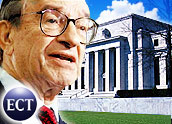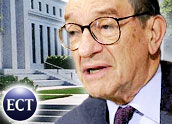
Employers added 112,000 workers to their payrolls in the U.S. during the month of June, a figure that fell far short of expectations and left the national unemployment rate unchanged as more people joined the ranks of those actively seeking work.
In its monthly report released early Friday, the Bureau of Labor Statistics (BLS) said the unemployment rate was again 5.6 percent for June.
In addition to the disappointing numbers for June, the BLS also revised earlier job-creation numbers slightly lower, saying 235,000 positions were added in May, down from 248,000, and that April saw 324,000 new jobs, instead of the 346,000 it had originally reported.
Economists had been predicting another 225,000 jobs would be added last month.
The report also found just a slight uptick in hourly wages, with pay up 0.1 percent, yet another indication that inflation is in check. The BLS also found a decrease in the average number of hours worked each week, with the figure dropping to 33.6 hours from 33.8 in May. Most forecasts had called for the hours worked figure to rise slightly.
Expectations High
The news rattled the stock markets on what was expected to be a quiet day of trading heading into the long July 4th weekend. By midday all the major averages were trading lower, with the Dow off more than 40 points on the job news as well as more tempered outlooks from some corporations.
The long-range trend remained favorable, with June marking the 10th straight month that the U.S. economy added jobs, with 1.5 million people put to work during that stretch, more than 1 million of them since the start of the year.
But the strong run of large-scale job creation that began in the spring had created widespread expectations that employers were bullish on the economic recovery. The strength of the recovery has been called into question recently by some official data and by warnings from some major U.S. companies.
Far-Ranging Implications
The slowdown in job creation could impact everything from the Federal Reserve’s position on interest rates to the reelection campaign of President Bush, said A.G. Edwards chief economist Gary Thayer.
Thayer said the fact that many workers remain available to reenter the workforce will help keep wage inflation low, which in turn will mean the Fed will be able to keep rates at historically low levels, providing impetus for the recovery to continue.
“Wage inflation only happens when there’s relatively little labor supply, which isn’t the case now,” Thayer told the E-Commerce Times.
Sharply higher wages have always drawn fast action from the Fed, which sees it as the truest measure of inflation, he added. “With wages under control, that impetus for higher rates is off the table, at least for the foreseeable future.”
Recovery Could Continue
Edward Steinberg, professor of economics at Quinnipiac University, said the recovery could continue at even a strong pace for some time before the unemployment rate actually dips.
He told the E-Commerce Times that the percentage of adults participating in the labor force is well below what it was during the boom years of the late 1990s.
“If more jobs are created and wages start to improve again, more people will be likely to get back into the workforce, keeping the jobless rate from falling much,” Steinberg added.



























































Social Media
See all Social Media